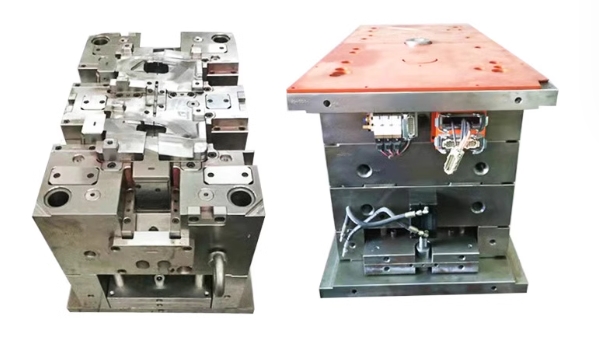Although casting molds and injection molds are both used to manufacture parts, there are many significant differences between them. Here are the main distinctions:

Injection pressure
Die casting molds need to withstand greater injection pressures, so they have higher requirements for the template, which requires thicker material than injection molding dies to avoid deformation.
Gate Design
The sprue of die-casting mold is different from that of injection mold, which needs to be decomposed by diversion cone to withstand high pressure.
Heat treatment
Die casting molds do not require heat treatment because the temperature inside the mold cavity during the die casting process is already high enough, equivalent to completing a heat treatment. Injection molding molds, on the other hand, need to undergo heat treatment.
Surface Treatment
The core in the die casting mold needs to undergo nitriding treatment to prevent the alloy from adhering to the core. Due to the high corrosiveness of the die casting mold, the surface usually requires a blueing treatment.
Exhaust Method
Injection molds can usually be vented through ejector pins and parting faces, while die-casting molds require the use of dedicated vent grooves for ventilation.
Matching Requirements for Fractal Surfaces
The alloy fluidity of die-casting molds is better than that of plastic molds, so higher parting surface matching requirements are needed. It is dangerous for the flowing material to fly out from the parting surface under high temperature and high pressure.
Clearance of moving parts
Casting dies require larger clearance between moving parts to withstand high-temperature thermal expansion compared to injection molds, which can have smaller gaps between moving parts. If the gap is too small, the die may become stuck.
Materials and Structures
Die casting molds are usually made of steel or other wear-resistant materials to withstand high temperatures and high pressure deformation, while ensuring the precision and surface quality of the parts produced. Injection molding molds, on the other hand, are typically made of aluminum alloys, steel, etc., to reduce manufacturing costs and improve production efficiency.
Applicable fields
Die casting molds are suitable for producing parts in high-end industrial fields such as furniture, household appliances, automobiles, aviation, and electronics, while injection molding molds are applicable to daily necessities, electronics, medical devices, and various consumer goods, as well as parts in low-to-medium industrial sectors.
Performance
The density of die-cast parts is higher, and the internal structure is dense, so the strength, hardness, and rigidity of die-cast products are higher than those of injection molded parts. At the same time, die-casting molds can produce more precise parts, and the cost of post-processing of products is relatively low.
In summary, casting molds and injection molds have significant differences in terms of process, material, structure, and application fields. Choosing the appropriate mold type depends on specific production needs and material properties.